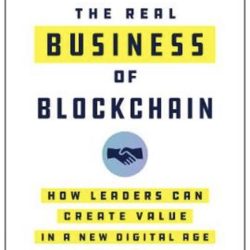Presenting blockchain as the long-awaited turning point in supply chain management

In the recently published book called Integrating blockchain into supply chain management, the phenomenon of blockchain is skilfully stripped of its vague and abstract outer layer. The four authors explain in no uncertain terms how to turn a transaction into an information package (‘block’) including relevant supply chain information, how to link the blocks together (to form a ‘chain’), and how to make that available to all parties. They also provide a no-nonsense explanation of all other technical aspects of blockchain.
The book contains some wonderfully sobering quotes from professionals who already have some experience of blockchain. They didn’t find it very groundbreaking, but it has given them a lot of insights, according to top managers from the likes of Maersk and Walmart. At Maersk, blockchain enables them to see immediately where containers are located, and at Walmart they have the entire logistics history of batches of Mexican mangoes at their fingertips. “We could have done that with our own system,” says Frank Yiannas of Walmart, “but not for 70,000 food SKUs at a time.” Blockchain is such a game changer because it would be impossible for Walmart to establish a separate IT link with all its suppliers, he says.
Business benefits of blockchain
In the second part of their book, the authors claim that the real business benefits of blockchain lie not in visibility but in process improvements. They dedicate a separate chapter to describing each of those process improvements in turn, in relation to inventory management, demand management, supply management and transportation management. As an example, they mention the infamous bullwhip effect – which despite having been acknowledged for the past 20 years, only seems to be getting worse as a result of the globalization and fragmentation of supply chains. The book makes it very clear that blockchain can almost eliminate this problem at last.
The most difficult aspect of blockchain is not the technology itself, nor identifying possible applications for it, but actually putting it into practice. This is dealt with in the third part of the book. The authors provide practical tips and share the lessons learned during the RFID hype to help companies develop a business case and actually get started.
Hype cycle
According to analyst firm Gartner’s hype cycle, blockchain is currently in the ‘trough of disillusionment’; the real success stories are yet to come. But the authors strongly dispute that in this book. Disillusionment? Not here; their enthusiasm is tangible on every page. They believe that the blockchain hype is in full swing and will lead to a turning point in supply chain management: “At long last, it is pushing and pulling the supply chain world towards the innovations it should have implemented 20 years ago.”
‘Integrating blockchain into supply chain management’ (2020), Van Hoek, Fugate, Davletshin & Waller. Kogan Page, 264 pages, €49.99
![]()










